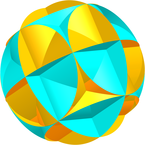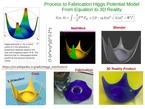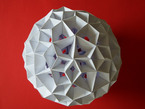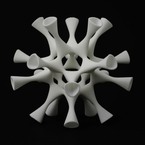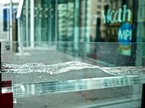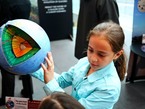Platonic Solids
Hands-on
Lizenz
Autoren
The Platonic Solids are some of the most beautiful and symmetrical shapes in the mathematical world and as a result have fascinated mathematicians for thousands of years. This exhibit explains their mathematical deifnition and how they have been used throughout history to model everything in our universe, from the classical elements of Ancient Greece through to Kepler’s model of the solar system. It also explores their appearance in nature and how humans have made use of their mathematical properties to improve the design of man-made objects.
The exhibit can be broken down into three main parts: an information board, a hands-on quiz and a hands-on exercise to build your own set of the Platonic Solids. It is suitable for all ages. The building of the model Platonic Solids in particular will appeal to younger children, whilst the infomration board and quiz should appeal to people of all mathematical ability.
Information Board
It is broken down into five main sections: History, Elements, Nature, Planets and Man-Made. Within each section is information relevant to the title explaining the use of the Platonic Solids in that context. There are also associated pictures and diagrams for each section, as well as a corresponding quiz based on the information given (see Quiz below). The text and pictures are included in attached documents.
Quiz
The quiz contains five sections, each one based on the information given in the relevant section of the information board. The hands-on element of the quiz requires participants to connect a piece of string/rope between the correct points, where the length of each string is unique to the Platonic Solid. This allows some guesswork if the participant is struggling with the questions and also allows them to be reassured that they are correct. The answers, with reasons, are given on the information board, hidden underneath hinged panels. The quiz questions and answers are included in attached documents.
Building Platonic Solids
There are nets for the five Platonic Solids printed out onto A4 pices of paper, which can be cut out with scissors and glued together to make a small model of each shape. These could be provided at the exhibit (under relevant supervision) and could be taken home by participants as a souvenir. This could also be extended through the use of larger plastic models of the Platonic Solids which are available to be purchased through the website www. polydron.com. The nets and information on the plastic models are included in attached documents.











